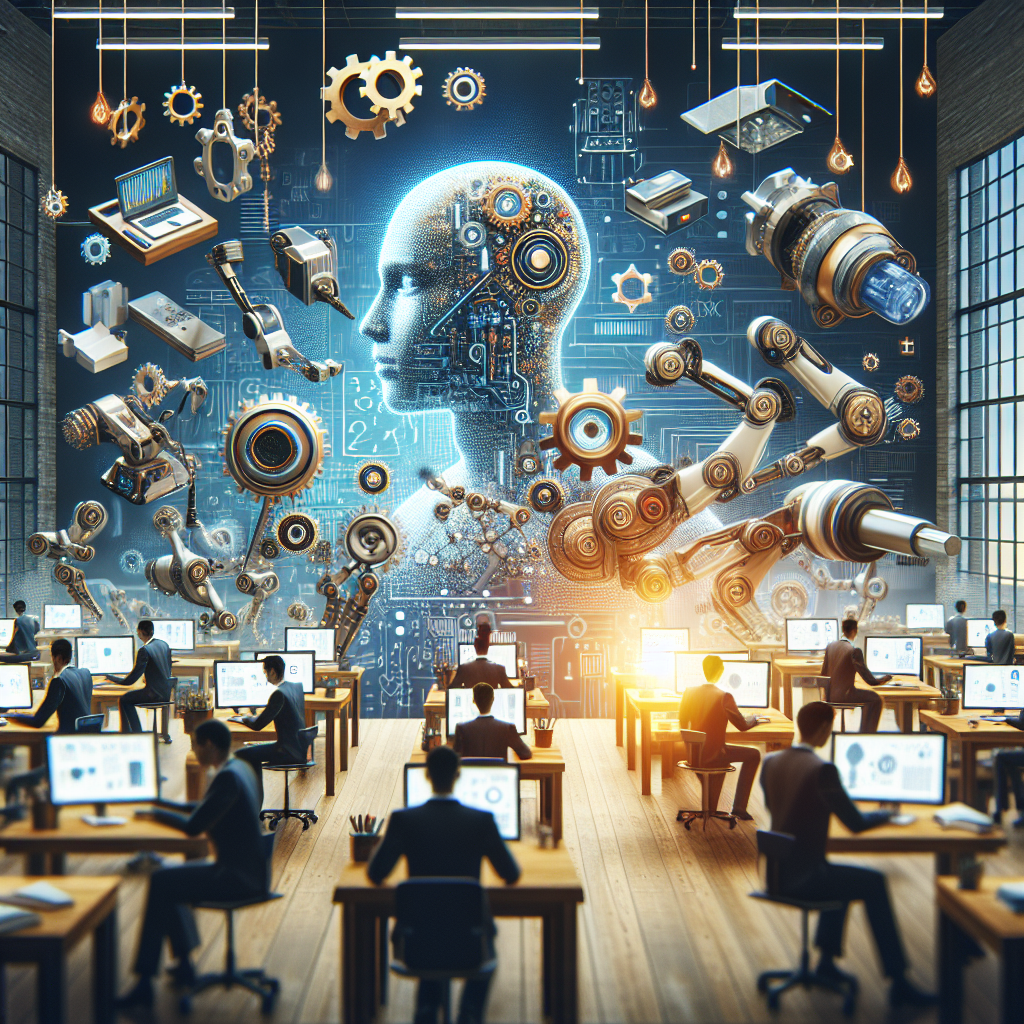In today’s fast-paced world, businesses are constantly looking for ways to enhance productivity and efficiency. One of the key ways they are achieving this is through the use of AI tools and automation. These technologies are revolutionizing the way we work, allowing us to streamline processes, eliminate repetitive tasks, and make better use of our time. In this article, we will explore how AI tools and automation can enhance productivity in the workplace, as well as address some common questions about these technologies.
Enhancing Productivity with AI Tools and Automation
AI tools and automation have the potential to transform the way we work by taking over mundane tasks and freeing up time for employees to focus on more important tasks. Here are some ways these technologies can enhance productivity:
1. Streamlining Processes: AI tools can analyze data and identify patterns to streamline processes and improve efficiency. For example, AI-powered analytics tools can help businesses identify bottlenecks in their supply chain or customer service operations and suggest ways to optimize them. This can lead to faster turnaround times, reduced costs, and improved customer satisfaction.
2. Eliminating Repetitive Tasks: Automation can take over repetitive tasks such as data entry, scheduling appointments, and generating reports, freeing up employees to focus on more strategic activities. This not only saves time but also reduces the risk of errors that can occur when these tasks are performed manually.
3. Personalizing Customer Interactions: AI-powered chatbots and virtual assistants can provide personalized recommendations and assistance to customers, helping businesses deliver better customer service and drive sales. By analyzing customer data, these tools can anticipate customer needs and preferences, leading to more meaningful interactions and higher customer satisfaction.
4. Enhancing Decision-Making: AI tools can analyze vast amounts of data and provide insights that can help businesses make better-informed decisions. For example, predictive analytics tools can forecast sales trends, identify emerging market opportunities, and optimize pricing strategies. This can give businesses a competitive edge and help them stay ahead of the curve.
5. Improving Employee Collaboration: AI tools can facilitate collaboration among employees by providing a centralized platform for communication, project management, and document sharing. For example, project management tools powered by AI can help teams track progress, allocate resources, and stay on schedule. This can improve teamwork, boost productivity, and drive innovation.
FAQs about AI Tools and Automation
Q: Will AI tools and automation replace human workers?
A: While AI tools and automation can automate certain tasks, they are not intended to replace human workers. Instead, these technologies are designed to augment human capabilities, freeing up employees to focus on more strategic tasks that require human judgment and creativity.
Q: How can businesses ensure the security of their data when using AI tools?
A: Businesses should implement robust security measures to protect their data when using AI tools. This may include encrypting sensitive information, implementing access controls, and regularly updating software to patch vulnerabilities. Additionally, businesses should ensure that their AI tools comply with data protection regulations such as GDPR.
Q: How can businesses measure the ROI of AI tools and automation?
A: Businesses can measure the ROI of AI tools and automation by tracking key performance indicators such as cost savings, productivity gains, revenue growth, and customer satisfaction. By analyzing these metrics over time, businesses can determine the impact of these technologies on their bottom line.
Q: What are some common challenges businesses may face when implementing AI tools and automation?
A: Some common challenges businesses may face when implementing AI tools and automation include data integration issues, employee resistance to change, lack of expertise in AI technologies, and concerns about job displacement. To overcome these challenges, businesses should invest in training programs, involve employees in the implementation process, and seek external expertise if needed.
In conclusion, AI tools and automation have the potential to enhance productivity in the workplace by streamlining processes, eliminating repetitive tasks, personalizing customer interactions, enhancing decision-making, and improving employee collaboration. By leveraging these technologies effectively, businesses can gain a competitive edge, drive innovation, and achieve sustainable growth. If you have any further questions about AI tools and automation, feel free to reach out to us for more information.

